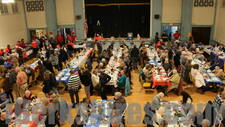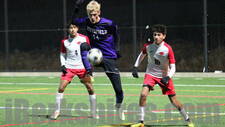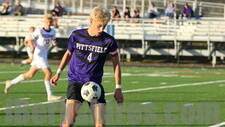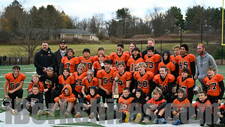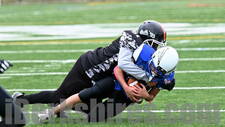Excessive Heat Warnings In PlaceBy Susan Bush
12:00AM / Monday, July 31, 2006
Dangerous Heat Levels Predicted
Local weather forecasters have issued excessive heat warnings for much of the Berkshires, Southern Vermont, and eastern New York state for Tuesday, Aug. 1 and Wednesday Aug. 2.
The warnings mean that heat and humidity levels are likely to create conditions that feel as though temperatures are over 105 degrees Fahrenheit. Weather forecasters are terming the sitaution dangerous, especially for those who are very young, the elderly, those with health conditions such as emphysema, and those who have no access to air-conditioned spaces.
Heat Health Risks
The predicted weather conditions mean that a risk of heat stroke, heat exhaustion, and dehydration is present.
Infants, senior citizens, and those who are physically active during periods of heat and humidity face the greatest threat of heat-related health conditions. Construction, utility, and landscape workers are among those whose labors keep them outdoors in hot weather.
Heat stroke is considered a medical emergency requiring medical intervention, according to information provided at a www.medicinenet.com Internet web site. Medical intervention is advised in cases of heat exhaustion and dehydration, and may be necessary when heat rash or sunburn have occurred.
Heat stroke occurs when body temperature becomes elevated. Other symptoms likely include a lack of sweating, the appearance of dry, hot, flushed skin, a rapid pulse, difficulty breathing,and odd behavior or hallucination, according to an article written by Dr. Melissa Conrad Stoppler and posted at www.medicinenet.com's web site. Dehydration can contribute to cases of heat stroke, according to the article
Medical intervention must be sought immediately. Heat stroke can lead to organ damage and may be fatal if medical help is not acquired. Emergency aid includes moving a person with heat stroke to a shaded area, removing clothing, and using cool or tepid , not ice-cold, water to cool the individual. Ice-packs may be placed beneath the armpits and groin area. Fanning someone affected with heat stroke is also advisable.
Emergency first aid is not a substitute for medical intervention.
Seek help immediately.
Senior citizens who live in places without air-conditioning or other significant cooling mechanisms may be at increased risk of heat stroke. Wellness checks for senior citizens are recommended during heat waves. Infants and toddlers should avoid spending time outside during excessive heat warning conditions unless the children can remain in shaded, cooler areas. Wading or toddler-sized pools may be moved to shaded areas; children should never be left unattended around pools no matter what the weather.
Weather Dangers For Dogs
The family pet is also at increased risk of heat stroke during heat wave conditions. Leaving dogs in vehicles during hot weather is the most frequent cause of canine heat stroke, according to information available at a www.petplace.com Internet web site.
At-risk dogs include puppies under six months old, overweight dogs, dogs that are exercised excessively, certain breeds such as pugs, English bulldogs and Boston terriers, large breed dogs, and dogs with certain medical conditions. Symptoms of canine heat stroke include excessive panting,bright red mucous membranes such as the gums and area surrounding the eyes, weakness, collapse, or coma. A dog affected by heat stroke should be taken to a veterinarian or animal clinic immediately.
Prevention Suggestions
Heat-related conditions may be prevented. Humans may avoid heat stroke or heat exhaustion by drinking fluids such as water and Gatorade and avoiding alcoholic beverages, coffee, and tea, according to information posted at a www.medicinenet.com web site.
Wearing hats and light, loose clothing also may help prevent heat-generated conditions. Those who do not have to remain outdoors for prolonged periods should seek cool, interior spaces. Physical exertion should be kept to a minimum or avoided.
Canine heat stroke may be prevented. Information available at a www.petplace.com web site recommends that activity be kept to a minimum during hot, humid days, and exposure to sunlight be limited when the temperatures and humidity levels are high. Dog-walking should occur during early morning or evening hours, when the air may be cooler. Be certain that dogs have access generous water supplies and cool areas. Do not leave a dog in a vehicle during hot weather, even if windows are left partially open.
Information provided in this article is meant as information only and is not a substitute for professional medical advice. Information in this article should not be used to diagnose or treat a medical or health condition. Anyone who believes that they are experiencing a medical problem should promptly contact a professional healthcare provider.
Susan Bush may be reached via e-mail at suebush@iberkshires.com or at 802-823-9367. |




